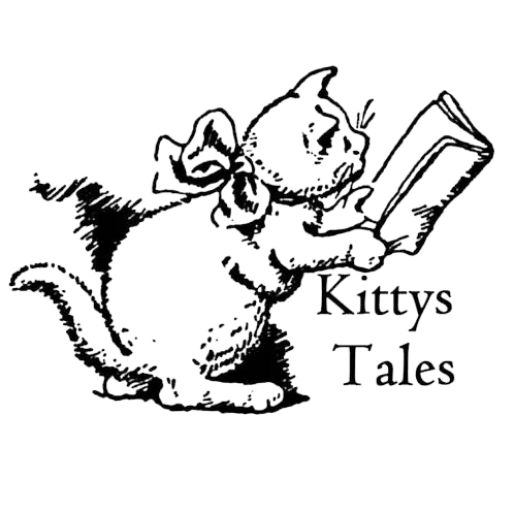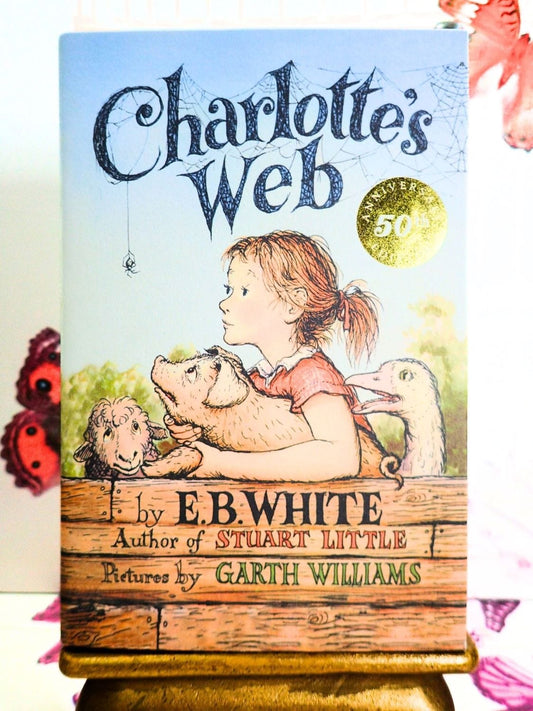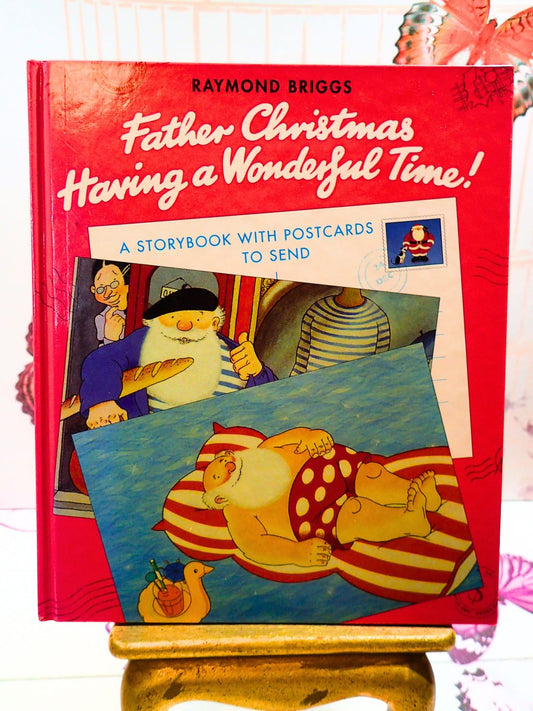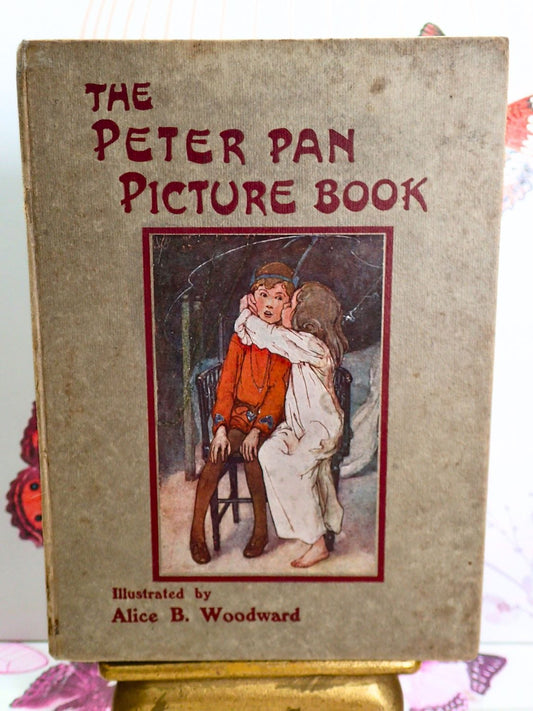Kittys Tales Guide to Vintage Book Condition
When purchasing an Antique, Vintage or Pre-loved book understanding the condition of the book you purchase is one of the main priorities in your purchasing decision.
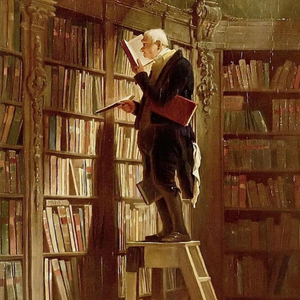
Kittys Tales Condition Notes
At Kittys Tales we place the greatest importance upon accurately describing the condition of our vintage and antique books.
We carefully and clearly describe any wear or flaws the book may have in our 'Condition Notes' in the descriptions of each book we sell.
Kittys Tales use the following condition grades:
Fine, Excellent, Very Good, Good, Fair and Poor.
Book Condition Terms used by Kittys Tales.
-
Fine
Refers to a book near perfect in practically every sense, apart from its actual age. Equally the dust jacket if the book has one. It is worth noting that many antiquarian and vintage books were not issued with a dust jacket.
-
Excellent
Refers to a book that is in excellent condition and should generally have it's original dust jacket. It may have extremely minimal flaws eg. minor bumps to the corners or spine, that just detracts from Fine condition.
-
Very Good
Refers to a book in very good condition with a few signs of wear but minor defects only. Generally books in very good condition will come with their original dust jacket, the jacket may show more wear than the book.
-
Good
Refers to a book that is in good robust condition but it will show wear throughout. To describe a book as good still however means it should be complete with no losses to pages or illustrations. Often a book described in 'good' condition will lack it's dust jacket.
-
Fair
This refers to a book in quite heavily worn condition but is complete with all its pages (and illustrations). It may lack blank pages or a dust jacket. Reliable and honest sellers like ourselves conscientiously describe any losses the book may have and will highlight these in the condition notes.
-
Poor
'Reading Copy Only' or 'Well-Loved'. Refers to a book that is often badly worn but complete in the text. Perhaps with graffiti on many pages, staining, foxing, tears or missing illustrations. Heavily read Ex-Library books are often in 'Poor' condition, thumbed and badly creased.
-
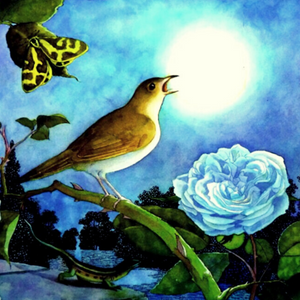
Vintage Bedtime Story Books
Why do we recommend "Kittys Tales" Collection of "Vintage Bedtime Story Books"? Many...
-
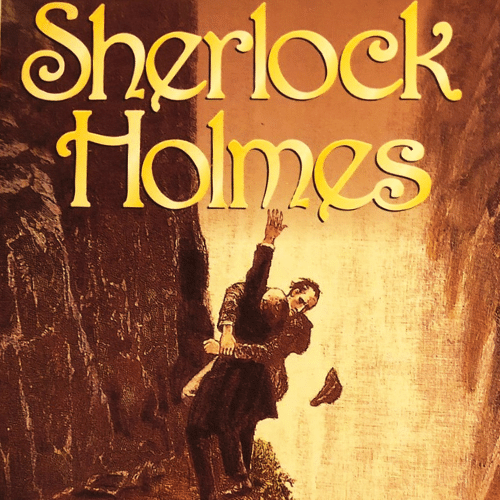
Crime Fiction & Detective Stories
Why browse Kitty's Tales vintage Crime Fiction and Detective Stories? Everyone has...
How are your books Graded?
Kitty personally curates all our books and appreciates the importance of seeing a clear and detailed photograph of the book you are buying.
This is why at Kittys Tales we always provide plenty of photographs of each individual Vintage and Antique book we sell.
If you have any questions please feel free to contact us on the form below:
More Information
How does Kittys Tales tell the age of the books they sell?
Kitty is a lifelong book lover and collector (bibliophile) and specialist with a keen historian's interest in literature, books and ephemera.
Many years of experience in the antiques and book trade make it easy to recognise the age of a book and the era it was created in.
Identifying the age of a book is achieved by closely examining the binding or cover of the book, the quality of the many different type of paper that might have been used in construction of the book (chain laid paper, rag paper, woven paper, pulp paper) and type of printing used; general typography, the illustrative style and many other hidden clues such as watermarks and specific styles of collation that book specialists are aware of.
In many cases the book has a publication date which makes age identification far easier! Sometimes a date may be written in Roman Numerals this usually occurs in 19th century and earlier books.
Many of the books for sale at Kittys Tales are Victorian or Edwardian. Vintage 19th Century or early 20th Century. If you have any further questions for Kitty please ask!
I think my book is a very rare first edition how can I tell?
When books are exceptionally rare it is important to thoroughly review all available literature and information regarding the publication of the book.
If it is a first edition you need to make sure it is in the relevant 'state'. (*This applies most importantly to a true 'First Edition' and is less important for a 'First Edition Thus')
It is necessary to consider such things as particular usage of words that do not occur in later editions, changes to the binding or dust wrappers or errata such as printing errors that were subsequently corrected in later publications.
In modern day editions the print run of a book is also important as the most valued books came from the very first print run at the first publishers to issue the book.
* A 'First Edition Thus' is not the first time a book ever appeared in print which is the true 'First Edition'. Rather, a 'First Edition Thus' is the first time a book was published by a particular publisher. 'First Edition Thus' books can still be highly collectable even though they were not the 'True' first edition especially if they were a limited first edition or signed copy.
The term 'Collectable' usually describes a book that is sought after by collectors either by reason of scarcity, immense popularity or the fact that the book is now completely out of print.
People collect books for all sorts of reasons. Some collectors are especially interested in books that have fine or decorative bindings, sometimes even irrespective of content as these decorative books look so attractive on bookshelves and are even used by interior designers to give character to a room.
Some people collect a particular style of binding by a famous bookbinder. Others purely love the aesthetic of all and sundry decorative books, Victorian and Edwardian children's stories often come in very attractive coloured cloth and gilt bindings. The Bodleian Library has some super examples of this genre of books.
Sometimes famous artists such as Arthur Rackham, Edmund Dulac and William Heath Robinson were commissioned to illustrate books and the exquisite artistry of the illustrations makes these books highly sought after and collectable.
People also like to collect books that align with their world view and hobbies such as classic novels, fairy tale children's books, arts and crafts books or from a particular era such as Victorian or Edwardian novels.
First Edition Books
A true first edition is usually the very first time a book appears in print. An actual first edition is usually by dint of the term's usage a first printing. There are exceptions for example, in the case of serialisations such as a Dicken's novel, the term applies to the first time the novel has been collated together in an actual book rather than a periodical.
Once a book is released to the public other publishers may pick up the rights to publish and the first time they publish a book becomes a 'First Thus' which is not the true First Edition.
What is a first printing?
In older Antiquarian and Vintage books first printings are usually identified by the fact that there are no 'reprinted' dates listed on the publication data page. The book may or may not state it is the first edition but will give the correct date for first publication. In very old books the publication date tends to be given in Roman numerals.
In modern era books there is often a number line included within the publication data, the number line should be complete with all the digits from 1-10 to make the book a first printing but not necessarily in that order.
What are Limited Edition Books?
Limited editions differ from first editions as they are not usually a true first edition rather they are often deluxe copies of a book from a limited print run at a later date than first publication, often an anniversary edition, quite frequently signed by the author, with superior illustrations or a high quality binding. These are not necessarily First Editions but often become very collectible due to their scarcity and limited number.
What does Out of Print mean?
This means that a book is no longer under production by any publishing house. This term used to frequently apply to vintage, antiquarian and collectable books. However, in recent years with the birth of global markets there are now many businesses that operate a 'print on demand' service, printing books that are out of copyright in the 'Internet Archive' as paperback or budget hardback editions. The books are generally manufactured in places such as India or China or similar.
Why is where a book was published and by whom important?
In the world of Vintage and Antiquarian Book Collecting great stall is set by having a first edition book from the first publishing house to
release the book to the public market, which is generally classed as the true first edition.
Very popular books such as the Harry Potter novels for example, often go on to be printed worldwide but it would be the Bloomsbury, London, English first printing of the novel that would be the most sought after, that is the true first edition rather than the US edition or any other country's publication although other editions can be very collectable.
I have a book in poor condition but I think it is very rare, does condition alter the value of rare books?
Occasionally very rare and early books can still have a high value even if in poor condition, if for example, there are a very few of them known in existence. Generally speaking a mass produced book from the 19th, 20th or 21st century needs to be in good condition to have a high value. There are a few exceptions to this rule for example if a book is a first edition and signed it may still be valuable despite poor condition.
Do books always have a publication date?
Many vintage and antiquarian books do not actually have a publication date. In these cases it is important to review literature, museum records and other historical data to identify when the book was published.
Sometimes family / gift inscriptions or bookplates in books give a rough guide to the age of the book. Often in the olden days or even the 20th Century, books were passed on as gifts for many generations.
It is not unusual to see a book that was actually produced in the 19th century to have a gift inscription for the early 20th century, especially dates during interwar periods when paper production was scarce and rationed for the war effort.
Traditional book collecting norms might have seen an inscription in a book as detracting from the value (unless by an important personage connected to the book).
Times and sentiment has changed however and now we often see an inscription in a vintage book as an important part of its provenance, social history and charm.
I have a vintage Beatrix Potter that says 'Copyright 1904' does this mean it was printed in 1904 and is a first edition?
The copyright date of a book is when the publishers first gained copyright permission to publish the book. It is not the date the book was printed which is usually provided separately.
In the case of 'Warne & Co' who acquired copyright to Beatrix potter books in the early 20th Century they continued printing the books for many years afterwards, therefore the copyright date in the book is the first date they acquired copyright.
Any Beatrix Potter book with an ISBN code will have been printed after 1970 when the ISBN code was introduced. Prior to that the printers used their own arbitrary print codes.
Identifying a first edition Beatrix Potter (as with any first edition) book can be a complex process dependent upon various words used in the text, the style of the endpapers, the artwork used, typography, page formatting and many other important factors that need to be verified.
Do you offer a book valuation service?
This is not a service we offer. There are many good resources online that offer basic pricing information or you can review prices achieved in popular marketplaces such as Ebay.
Kitty loves to chat about books and although we have the expertise to be able to offer general advise regarding a books age and and scarcity we do not offer an insurance or sale valuation.
Do you buy books?
Kittys Tales does not normally offer a book buying service. Each book in the Kittys Tales catalogue has been individually curated by Kitty for quality and appeal and match with our brand.
We are not bulk book buyers and do not offer a house clearing service.
We generally aim at the collector's market rather than bulk reselling which gives us the freedom to focus on the nicest quality and most appealing books that we love the most and think you will do too!
I have a huge amount of books to dispose of what can I do with them?
If you have a large amount of books you wish to dispose of in a hurry please consider donating them to a charitable cause. Even if the charity is unable to sell the books themselves they often offer them to mass wholesalers and that way can still make proceeds for the charity.
As we are animal lovers ourselves (particularly cats of course) we would like to recommend you donate to your favourite animal protection charity as a worthwhile and conscientious thing to do.
Please do not throw your books away unless they are mouldy or totally beyond repair by preventing them ending up as landfill this way we can all help to protect our environment.
Why should I buy a Vintage or Antiquarian book and not a new one?
There is something completely charming about holding a book from the 19th century or early 20th century and sharing the pleasure it has given other people over the years.
It is wonderful to hold a book you remember from your childhood or an old copy of a favourite novel from years gone by.
Books are tangible items that have their own history just like we do and can be shared with your children or passed down as family heirlooms.
Vintage & Antique Book Condition Terminology
Age Tanning and Spotting:
Because of the effect of UV rays and oxidation, paper will gradually turn yellow or sepia coloured and may become brittle. Generally used paper is naturally acidic which is why collectors like to wrap books in acid free tissue paper or use other archival quality papers.
The natural aging process of books does not have to be a major problem if the books are properly cared for. Books produced in earlier times for example, the 18th century, were often made from better quality paper with a higher 'rag' content which means some antique books actually survive in far better condition than modern and contemporary cheap mass market books and paperbacks in which the pages often tan quite rapidly.
Sometimes the tanning is uneven for example, round the page edges only, or may be slightly speckled in nature. We might call this 'age freckling' which is a fun descriptive term. In antique books you often see tanning when a page has been next to a printed illustration.
This is why finely illustrated books would frequently have tissue guards. Sometimes previous owners would remove the these sheets of tissue paper so it is always nice if they are still intact in antique and vintage books. Tissue guards also protect against dampness, sometimes in an old book the tissue guard may be stained from 'Foxing' whereas the actual pages aren't.
Sunning:
This term is used when the spine or cover of a book has faded and has been bleached a lighter colour by the action of sun light. Often a vintage book's spine can be a few shades lighter than the rest of the book. If you are a general book collector this should not be something that detracts from a book as the books can still be in generally very good condition despite this minor flaw. Flaws such as this are what makes old books found in Fine condition extremely valuable as we are all subject to the often unavoidable wear and tear of UV rays and age.
Pulled Spines:
Many people incorrectly handle their books with a tendency to pull them from the book shelf via the 'head' (top) of the book's spine. Constantly doing this actually damages the top of the spine and distorts the shape, thins it and makes it prone to tears damage and chipping. The damage can occur on the book itself and particularly on any dust jacket.
Chipping:
May describe any part of the exterior of the book, boards, dust jacket etc., that have been damaged by small losses and nibbles to the paper/leather/boards.
Shelf Wear:
The wear that occurs as a book is placed onto and removed from a shelf. It may be to the tail (bottom) edge of the covers as they rub against the shelf, to the dust jacket or exterior of the covers (when no dust jacket is present) as the book rubs against its neighbours, or to the head of the spine which some use to pull the book from the shelf. A book with Shelf Wear is likely to have Edge Wear.
Edgeworn:
a fairly self explanatory term meaning the extremities of the book particularly the boards or wrappers are worn/rubbed.
Tear:
If the pages of the book have been ripped we describe this as a tear. If the tear fits neatly together without any loss this is classed as a 'Closed Tear' which could be repaired if preferred by recommended archival/conservator methods.
Thumbed:
When the pages of a book have been excessively handled and may no longer lay pristine and flat and may or may not have grubby finger marks.
Ex-Library:
As discussed regarding Condition notes many people see a public Ex-Library book as being one of the worse categories of condition as books are often extremely worn. Books that belonged to some 19th or early 20th school libraries can often be found in very good condition and are often attractively leather bound with a crest and come without the labels stickers and damage normally associated with more modern Ex-Library books.
Ex Libris:
This differs from Ex Library and is a term generally used to describe when a book has been in a private and not available to the general public collection ie that of a famous collector or private individual. If a book has a previous owners book plate 'Ex Libris' will be used to qualify this condition.
Book Club Edition:
Again not strictly a flaw but in the past book collectors have been very sniffy about Book Club Editions (often abbreviated BCE). In more recent times perhaps instigated by the popularity of books such as the James Bond Book Club Edition books (that still appeal to James Bond collectors because of their attractive wrappers) Book Club and Guild Publishing editions although not quite the quality of the original publishing house books have actually become popular with interesting period dust jackets and graphics so some are even sought after by collectors in particular genres.
Remainder Mark:
A remainder mark is an identifying mark placed on the outside of the text block either top edge or bottom by the publishing house, when a book has been returned to the publisher by the retailer as unsold. Often these books find their way again into the secondary market. This is not usually a problem other than when collecting First Edition Books. A remainder marked copy of a First Edition is deemed less valuable by collectors than a true First Edition.
Deckle Edged:
If a book was published with pages unopened then the reader would use a paper knife to slit the edge of the fold to open the pages which subsequently left the pages with an uneven ragged 'deckle' edge. Many Victorian children's books were issued with pages uncut hence they end up being deckle edged after having been read.
Trimmed:
When page edges have been neatened from the deckle edged state or reduced in size to remove other damage. If a book has been overly trimmed it could be said to have poor margins.
Price Clipped:
The price has been clipped away from the corner of the dust jacket.
Foxing:
Foxing is a richer rust-coloured staining, often in a filigree like form unevenly across the pages. Foxing is caused by the book having been subject to moisture at some point in its existence. It is difficult to remove and as long as the book is kept in a suitable (not damp) environment the foxing should not get any worse. If it is a very valuable book eg. a museum piece on display, a professional book conservator sometimes works to remove or minimise foxing but this is a complicated process and only necessary for very valuable and rare items.
Worming:
Yes there actually is such a thing as a Book Worm of the non-human kind! Although not a particular insect books can be attacked by a variety of pests usually when they have been left un-cared for, for many years and often when the book has been kept in very damp conditions.
Book worm damage causes tiny pin prick holes in the paper or covers. Books from the first half of the 19th century or earlier with leather covers very often have minimal book worm damage that happened many years ago.
This is not a problem as long as the book is currently free from pests and the damage is not progressing. Sometimes even pests such as Woodworm that live on cellulose content have been known to find a nice snack via a book and in an extremely damp environment Silverfish can be a problem. This is why it is important to regularly inspect your book collection and keep them clean and free from dust and moisture or excessive heat.
Bowing/Bowed:
This is when the boards of the book or even the entire book no longer lays flat. The boards may turn inwards distorting the leaves or outwards damaging the structure of the book and leaving it prone to damage. This problem is often caused by excessive moisture, extremes of temperature or indeed both. Bowed books often suffer from Staining particularly, Water staining or Damp staining.
Staining or Fading:
Can be for a variety of reasons from general handling, aging processes, foxing or other moulds and mildew, moisture, dampness, spillages and tobacco or smoke related. Fading generally the result of UV light. Darkening usually due to aging processes or reactions to items such as acidic papers old newspaper clippings etc or adhesive tape residue. Occasionally old books may have a splodge of ink from the old fashioned ink dip pens on the cover.
Water Damage:
Should be described separately from staining as this can often distort, misshape or 'crumple' the pages or boards of the book.
Smoke damage:
If a book has been owned by a heavy smoker it may have been nicotine stained or damaged from smoke, this may also impart a distinctive tobacco odour to the book that differs from the general 'old book' smell that is actually quite pleasant for many people. The old book smell is due to a break down of the lignin in the paper that releases a variety of fragrant notes often described as chocolate, vanilla or leather.
Shaken:
An adjective describing a book whose pages are beginning to come loose from the binding. A shaken book is usually loose.
Loose:
with respect to the binding, a book that is loose has usually been frequently read and may have creases along the spine where it has frequently been opened. This condition may be deemed a flaw in a first condition modern or contemporary book as collectors generally seek books that appear unread except in the case of antique and scarce antiquarian books.
Working copy:
Even more damaged than a reading copy, the working copy will have multiple defects and may even need repair.
Binding Copy:
This book is in a sorry state! Probably with detached or even no boards or wrappers. Its saving grace may be that it is either complete in collation (ie. all pages and illustrations present) or it is of sufficient scarcity or beauty to warrant a full restoration and re-binding. Many copies such as this are bought by Book Breakers (people who dismantle books to salvage what they can like car wreckers and sell off in mass the remaining prints or maps). Even book breakers save books from landfill so it is not all bad!
Some Book Conservation Terms
Re-backed:
A book that has been repaired by replacing the spine and mending the hinges
Recased:
A book that has been glued back into its covers after having been shaken loose.
Re-jointed:
Means the book has been repaired preserving the original covers, including the spine.
Unopened:
The leaves of the book are still joined at the folds, not slit apart.
Guide to Book Sizes and Formats
Terminology and Definitions
If you are new to the world of Book Collecting, especially with respect to Antiquarian and Vintage Books there are many terms and definitions that you might find confusing. On this page we are exploring the expressions and abbreviations used to describe the shape and dimensions of an actual physical book.
The origin of these confusing sounding terms is actually quite simple. When books were first created they were made from multiple large sheets of paper upon which the text, print and illustration was created.
The large sheets of paper were then folded multiple times, the more times they were folded the smaller the pages created hence the descriptions.
For example, the term ‘Folio’ is used when the original sheet of paper was folded only once, creating two pages or leaves. A 'Quarto' book has the larger sheets folded twice each creating four distinct quarters.
In Antiquarian books there were many differences in size due to the approximations and variations in production of paper.
Modern day printers are not constrained by the same restrictions of format so nowadays there is a much greater variation and many modern books do not strictly adhere to traditional printing formats.
Also traditionally when describing the size of a book only the size of the leaves or pages are measured to give the dimensions.
Nowadays we find this can be confusing for customers so may provide both the traditional terminology (where applicable) along with the actual gross measurements including the extremities of the book to the tip of its cover/boards.
Traditional Paperbacks books are much simpler as the cardboard covers rarely extend beyond the actual size of the pages. Softcovers of books occasionally extend beyond the size of the pages in both Modern and Vintage formats.
The field of miniature book collecting has evolved over the years changing what is deemed to be a true miniature. Nowadays generally a book that is less than 3" inches at the greatest dimension is classed as a miniature. Some of the tiny 18th century miniature books were actually as small as an inch in size. Wikipedia has an excellent page about Miniature Books.
Some dealers describe any book under 4" inches in size as a miniature but many see this as a loose description as these books would actually most probably align more closely with a Quadragesimo-Octavo (48mo) sized book.
Below is a helpful table illustrating the terms, abbreviations and sizes for your convenience:
| Abbreviation | Name | Dimensions in Inches |
| Min. | True Miniature | Less than 3" x 3" |
| 64mo | Sexagesimo-Quarto | 2" x 3" |
| 48mo | Quadragesimo-Octavo | 2.5" x 4" |
| 32mo | Tricesimo-Secondo | 3.5" x 5.5" |
| 18mo | Octodecimo | 4" x 6.5" |
| 16mo | Sextodecimo | 5" x 7.5" |
| 12mo | Duodecimo | 5" x 7.375" |
| 12mo (large) | Duodecimo | 5.5" x 7.5" |
| 8vo | Crown Octavo | 6" x 9" |
| 8vo | Octavo | 6" x 9" |
| 8vo | Medium Octavo | 6.125" x 9.25" |
| 8vo | Royal Octavo | 6.5 x 10 |
| 8vo | Super Octavo | 7 x 11 |
| 8vo | Imperial Octavo | 8.25 x 11.5 |
| 4to | Quarto | 9.5 x 12 |
| fo. | Folio | 12 x 19 |
| fo. | Elephant Folio | 23" to 25" |
| fo. | Atlas Folio | 25" to 50" |
| fo. | Double Elephant Folio | 50" + |
Is purchasing Antique or Vintage books from Kittys Tales good for the environment?
Purchasing one of our Vintage or Antiquarian books is an excellent way to help protect the environment. By giving a Vintage or Antiquarian book a new home you are not only saving the book but the environment too! Vintage and used books are a green gift and good for the environment. If a book is loved and looked after it is saved from landfill.
Check out Kittys Tales' Sustainability Pledge. for more information on how we believe buying vintage books helps save the environment.
Kittys Tales Latest Book Finds
-
Charlotte's Web E.B.White Classic Vintage Children's Book 50th Anniversary Edition Puffin Hardback
Regular price $18.00 USDRegular priceUnit price / per -
Father Christmas Having a Wonderful Time Raymond Briggs First Edition Vintage Children's Book
Regular price $67.00 USDRegular priceUnit price / per -
Heidi Johanna Spyri A tale for Children Dutton New York 1930 Beautiful Vintage Book
Regular price $67.00 USDRegular priceUnit price / per -
The Peter Pan Picture Book by J. M. Barrie Classic Antique Children's Story Beautifully Illustrated
Regular price $123.00 USDRegular priceUnit price / per
